
The vPlants Project. vPlants: A Virtual Herbarium of the Chicago Region. http://www.vplants.org is a wonderfully comprehesive collection of pictures with plant descriptions: plant form; leaf shapes; stem and leaf patterns; flower shapes; and more.
Middle and High School … from a Montessori Point of View

The vPlants Project. vPlants: A Virtual Herbarium of the Chicago Region. http://www.vplants.org is a wonderfully comprehesive collection of pictures with plant descriptions: plant form; leaf shapes; stem and leaf patterns; flower shapes; and more.
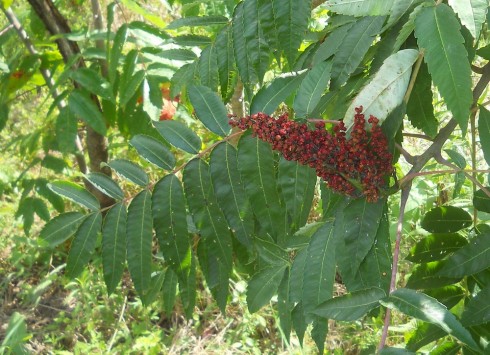
Ripe, bright-purple sumac berries are quite astringent. Steep a ripe bunch in a quart or two of hot water for a few hours (or cold water for a day) and the result is a tart tea. Add a third of a cup of sugar to make a delicious juice. (Note: Poison sumac is not found in Missouri, but it has been identified in adjacent, eastern states, so be careful.)
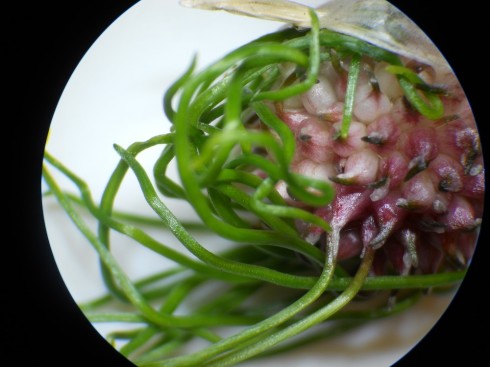
A new set of stereo, reflected-light, microscopes came in last week, and I’ve been testing them out. MPU has a good eye for these things, so I asked him to collect some samples for examination.
The first thing he came up with was this beautiful green onion. The seed head has some remarkable colors, and the microscopes are of good enough quality that we could examine in quite good detail at 10x magnification. We were even able to see a few small insects hanging out on the seed head that would have been invisible to the naked eye. They didn’t like the light, however, and hid before I could get a good photo.
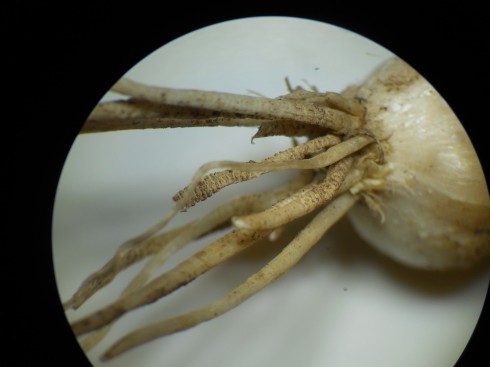

During class on Friday, I watered my Chinese five-color hot pepper plant for the first time in three days. It responded quite well, helping to illustrate one reason (to maintain their rigidity/prevent wilting) why plants need water. I did this because I was curious about how fast plants respond to water, and with the data from the images I should be able to demonstrate what a scientific report should look like.
The full plant’s response:
The original camera images were cropped for the gif-animation using Imagemagick’s convert
convert $i -crop 500x400+1550+1100 crop-$i
The image file sequences were converted to mp4 video using ffmpeg (instructions here):
ffmpeg -r 5 -b 64k -i crop-image00%02d.jpg watering64k-1000.mp4
where:
We just planted seeds using peat pellets. The students are always impressed by just how much they expand when you add water, so one student decided to record it on video. Since they recently acquired a new iPhone app that reverses the video, they posted the video played backwards.
Two years ago, the middle school’s flagship project was to put up a fully functional greenhouse (using this design). It took all year but we did it. On the way, we got to practice geometry, mapping and construction, while learning and growing plants and studying soil profiles. It was so successful that, with our spring plant sale we broke even on the entire project.
Last year, however, the greenhouse was somewhat neglected. My plans to add an automatic window opener, which would have been a wonderful tie-in to our electronics and Newtonian physics studies, did not work out; we just did not have the time. We’d taken the plastic covering off, so only the bare, forlorn PVC frame was left standing around a plot of waist-high weeds.
Though I could not have predicted it, this year we have a strong core group of students who are highly enthusiastic about resurrecting the greenhouse and making it work. My suggestion was that we try to grow produce this fall that we could cook in December when we do our Dinner and a Show. Well, two weeks in, they’ve already put together a menu plan, weeding is well on its way and I’m being harassed to hurry up and arrange a trip to Home Depot. The excitement is so infectious that another student has volunteered to bring in his electric weed-whacker during the immersion. It’s amazing!
I’m having the hardest time not butting in. There is a beauty in seeing a well oiled machine executing a project or solving a difficult problem. But there is another even more wonderful aesthetic visible in a the birthing struggles of a nascent team. The forward motion of infectious enthusiasm is pulling puzzle pieces into its wake, and the pieces just seem to click into place when the time is right. I have to keep reminding myself that my job is to prepare the environment and let the kids do the rest.
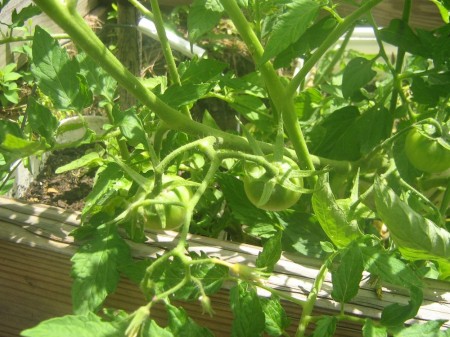
Next year we’ll be focusing on the life sciences, so this year one of my student’s research project was to try to grow some plants using the system we’d set up the year before to see how effective it was and to find out if we could use the plants we grow for a plant sale at the end of the year. I also started some plants at home as did the student’s parents, which served as a reasonable control.

We learned that you have to account for the different germination times for different plants, and the importance of hardening plants off before taking them outside. We also learned that the greenhouse can get too warm in the spring. While the plants we started at school were not the most successful, it was an extremely useful project nonetheless, otherwise we’d probably have made the same mistakes next year. A pair of temperature/humidity data loggers, for inside and outside the greenhouse, will be extremely useful for monitoring growing conditions.
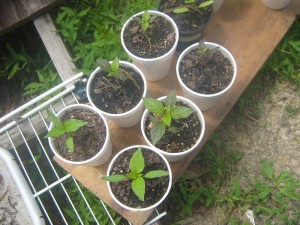
The big land-grant universities have fairly good extension services that have a lot of good information online. The University of Missouri’s page on Starting Plants From Seeds is quite useful, although it is not aimed at the organic gardener.
The sea slug.
Next year we’ll be going into the differences between plant and animal cells, as well as into the differences between plants and animals. There are a number of fundamental differences, starting with the fact that plants can photosynthesize to convert sunlight directly into energy and animals can’t. Except for the sea slug. Sea slugs have found a way to pirate chloroplasts from green algae (found via Immersion Blog).
Chloroplasts are the green cellular bodies (organelles) that perform photosynthesis. The species Elysia chlorotica eats the algae when they are young and instead of digesting them entirely, keep the chloroplasts in their gut.
Young E. chlorotica fed with algae for two weeks, could survive for the rest of their year-long lives without eating – Brahic, 2008
What’s even more intriguing is that there is evidence that the sea slugs have incorporated parts of the algae into their own DNA so they can maintain the right conditions for the chloroplasts to survive in the new host (Rumpho et al., 2008). The Sea Slug Form has a nice page on other solar-powered slugs.